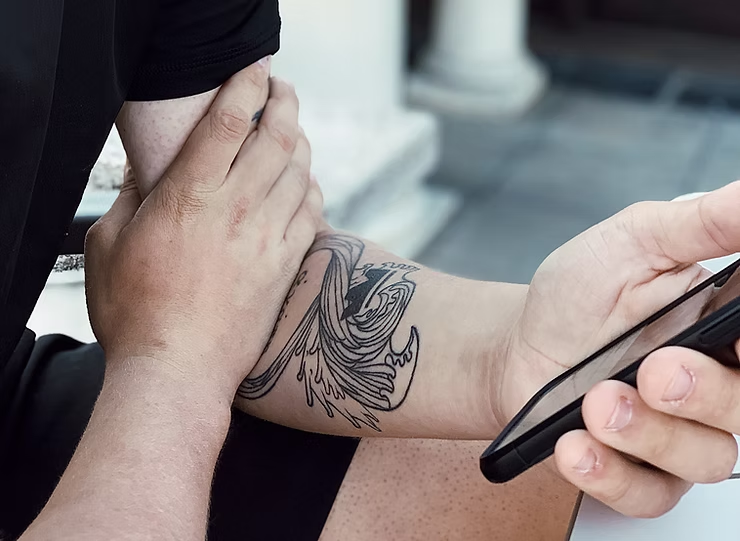Arm Dystonia Disability Scale (ADDS)
- Fysiobasen

- Dec 18
- 3 min read
The Arm Dystonia Disability Scale (ADDS) was developed by Fahn¹ to provide a more sensitive measure for detecting functional impairments related to focal arm dystonia. It builds on the principles of the Fugl-Meyer Assessment (FMA) and uses an ordinal scoring system to evaluate motor difficulties across seven selected daily activities, including playing a musical instrument.

Intended patient population
ADDS is particularly relevant for individuals with:
Genetic predisposition for dystonia combined with high exposure to repetitive, complex motor tasks (e.g., musicians, craftsmen).
Clinically diagnosed arm dystonia (see Dystonia and Dystonia Rating Scale for further details).
Method of use
The scale is designed to quantify disability on a scale from 0 to 100%, where 100% represents no disability.
Step 1: Task assessment
The patient performs seven predefined activities:
Writing
Playing a musical instrument
Buttoning (fastening buttons)
Using cutlery / eating
Hygiene (e.g., shaving, toothbrushing)
Grasping objects
Housework or outdoor work
Step 2: Scoring
Each task is rated as follows:
0: No difficulty or not applicable (activity not performed)
1: Mild difficulty
2: Moderate difficulty
3: Severe difficulty
Step 3: Calculation of final score
Total score is the sum of all tasks (maximum = 21 points).
The formula:
Final score = N% – [N% × (Total score / 21)]
where N% = 100%.
Example: A patient with a total score of 10/21 achieves:
100 – (100 × 10/21) = 52.4%
Variations in use
Terminology
Different studies have referred to the scale using alternative names:
Fahn Arm Dystonia Scale (Stinear, 2004)¹¹
Fahn dystonia disability scale (Garraux, 2004)¹²
Fahn dystonia scale (Zeuner, 2005)¹³
Severity from Fahn (Lim, 2003)¹⁴
Severity scale (Wu, 2010)¹⁵
Global Disability Score (Schmidt, 2006)⁹
Alternative task formulations
Some studies have rephrased specific activities:
“Eating” instead of “using cutlery and eating”
“Shaving/toothbrushing” instead of “hygiene”
“Gardening” instead of “housework or outdoor work”⁴
Alternative scoring systems
In certain studies, the final score is reported directly on a 0–3 scale instead of the standard 0–100% scale, which may lead to variation in interpretation and comparability of results⁴⁵⁶⁷⁸⁹¹⁰.
Evidence
ADDS is primarily used in research and clinical settings as a supplement to other dystonia rating tools. It is commonly employed to measure the effect of interventions such as sensorimotor retraining and pharmacological treatments⁴⁹¹³.
Clinical relevance
The Arm Dystonia Disability Scale provides a detailed and sensitive assessment of disability in focal arm dystonia. It captures motor difficulties in daily life activities with high specificity and is valuable both for monitoring treatment response and for clinical evaluation of functional status.
Sources:
Fahn S. Assessment of the primary dystonias. In: Munsat TL, ed. Quantification of neurologic deficit: Butterworths, 1989: 241-270
Medical Centric. Dystonia, Causes, Signs and Symptoms, Diagnosis and Treatment. : https://youtu.be/C-CrQVo9Irk
Tom Seaman. What is Dystonia and What Does it Feel Like? : https://youtu.be/rqhhYnYoOZo
Walter U, Buttkus F, Benecke R, Grossmann A, Dressler D, Altenmüller E. Sonographic alteration of lenticular nucleus in focal task-specific dystonia of musicians. Neurodegenerative diseases 2012;9:99-103.
Lie-Nemeth TJ. Focal dystonia in musicians. Phys Med Rehabil Clin N Am 2006;17:781-787
Jabusch HC, Vauth H, Altenmüller E. Quantification of focal dystonia in pianists using scale analysis. Mov Disord 2004;19:171-180.
Sakai N. Slow down exercise for the treatment of focal hand dystonia in pianists. Med Probl Perform Artist 2006;21:25-28.
Buttkus F, Weidenmüller M, Schneider S, et al. Failure of cathodal direct current stimulation to improve fine motor control in musician's dystonia. Mov Disord 2010;25:389-393.
Schmidt A, Jabusch HC, Altenmüller E, et al. Dominantly transmitted focal dystonia in families of patients with musician's cramp. Neurology 2006;67:691-693.
Berque P, Gray H, Harkness C, McFadyen A. A combination of constraint-induced therapy and motor control retraining in the treatment of focal hand dystonia in musicians. Med Probl Perform Artist 2010;25:149-161
Stinear CM, Byblow WD. Impaired inhibition of a pre-planned response in focal hand dystonia. Exp Brain Res 2004;158:207-212.
Garraux G, Bauer A, Hanakawa T, Wu T, Kansaku K, Hallett M. Changes in brain anatomy in focal hand dystonia. Ann Neurol 2004;55:736-739.
Zeuner KE, Shill HA, Sohn YH, et al. Motor training as treatment in focal hand dystonia. Mov Disord 2005;20:335-341.
Lim VK, Bradshaw JL, Nicholls MER, Altenmüller E. Perceptual differences in sequential stimuli across patients with musician's and writer's cramp. Mov Disord 2003;18:1286-1293.
Wu CC, Fairhall SL, McNair NA, et al. Impaired sensorimotor integration in focal hand dystonia patients in the absence of symptoms. J Neurol Neurosurg Psychiatry 2010;81:659-665









